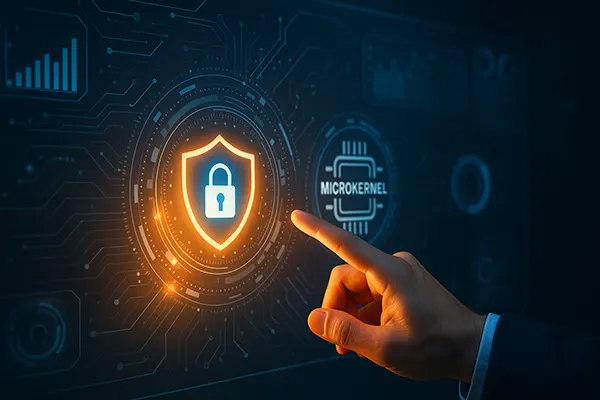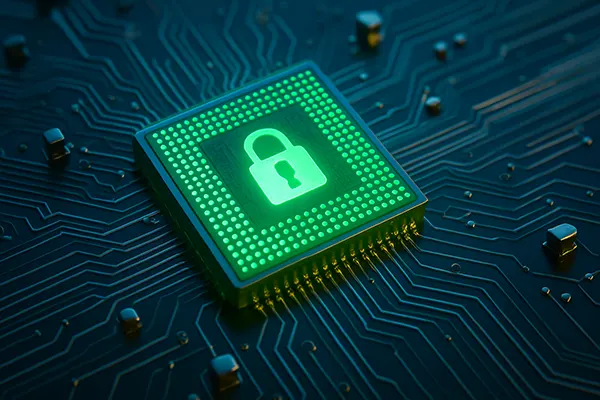Microkernel Operating Systems: The Future of Cybersecurity or a Utopian Dream?

With the growing complexity of digital infrastructure, cybersecurity has become more critical than ever. Traditional operating systems are being re-evaluated, and the microkernel architecture is increasingly gaining attention. While some see it as a foundation for a more secure future, others question its practicality and scalability. Are microkernel operating systems truly a revolution in cybersecurity, or are they merely an idealistic experiment?
Understanding Microkernel Architecture in the Context of Security
Microkernel operating systems are built with the idea of minimalism. Instead of integrating all system services into the kernel, as in monolithic architectures, microkernels separate functionalities like device drivers, file systems, and network stacks into user space. This separation provides better process isolation, which is critical in the event of a system breach.
By reducing the amount of code running in kernel mode, microkernels decrease the attack surface. This architectural design makes it significantly harder for attackers to exploit the core system. For instance, if a network driver is compromised, the kernel remains untouched, and the attacker does not gain system-wide access.
Furthermore, microkernels rely heavily on inter-process communication (IPC), which can be monitored and controlled more easily than direct system calls in monolithic kernels. IPC enhances system transparency, making it easier to detect and respond to malicious activities in real time.
Leading Microkernel Projects and Their Use Cases
Several microkernel-based systems have emerged as leaders in their niche. The seL4 microkernel, developed by Data61, is mathematically proven to be secure against certain types of attacks and is being tested in military and critical infrastructure settings. Its formal verification has made it a benchmark in secure OS design.
Another well-known example is QNX, widely used in automotive and embedded systems, especially in autonomous vehicles. QNX is praised for its real-time performance and fault tolerance, both essential for applications where failure could result in physical harm or financial loss.
MINIX 3, though originally designed for education, has evolved into a robust microkernel OS with a focus on reliability and self-healing features. It has even influenced the design of modern system components in commercial operating systems like Intel’s Management Engine.
Practical Challenges in Adopting Microkernels at Scale
Despite the theoretical advantages, the adoption of microkernel operating systems in mainstream computing has been slow. One of the key challenges is performance. The frequent context switches and heavy reliance on IPC can lead to slower execution times compared to monolithic systems.
Compatibility is another concern. Most commercial software is built for conventional kernels like Linux or Windows NT. Porting existing applications to microkernel environments often requires significant adaptation, which adds to development costs and delays.
Moreover, debugging and maintaining microkernel systems can be complex due to the modular architecture. Developers must be familiar with inter-module communication and synchronisation, which can complicate the learning curve and limit adoption among software engineers unfamiliar with such paradigms.
Performance Benchmarks and Limitations
Recent performance benchmarks show that modern microkernels have narrowed the performance gap with monolithic kernels. For instance, the L4 family of microkernels can achieve IPC latencies below 100 nanoseconds, rivaling traditional kernels in specific use cases.
However, high-performance computing tasks, such as video rendering or large-scale simulations, still benefit more from monolithic designs due to reduced overhead. This makes microkernels less suitable for consumer-grade desktops and gaming platforms, at least for now.
Additionally, certain features like GPU drivers and virtual memory management are challenging to decouple from the kernel. This results in microkernel systems relying on hybrid designs, which dilute some of the architectural purity and associated security benefits.

The Future of Cybersecurity Through Microkernel Innovation
Cybersecurity threats are evolving, and so must our approach to system architecture. Microkernels offer a promising path, especially in mission-critical environments where system integrity is non-negotiable. Their potential for formal verification and modularity aligns with the growing need for zero-trust architectures.
Governmental and industrial sectors are already investing in microkernel research. The European Space Agency and DARPA are exploring microkernel frameworks for satellites and autonomous systems. These developments suggest a shift toward compartmentalised security models that microkernels enable by design.
However, it is unlikely that microkernels will fully replace monolithic systems in the near term. Instead, a hybrid future is more plausible, where microkernel principles are incorporated into larger operating systems, enhancing their resilience without sacrificing usability or performance.
Adoption Trends and Industry Perspectives
Industry players like Google and Apple have shown interest in modular kernels. Google’s Fuchsia OS, based on the Zircon microkernel, hints at future mainstream adoption, particularly in IoT and smart devices where security is paramount.
Meanwhile, cybersecurity experts advocate for the integration of microkernel principles into hardened Linux distributions. Initiatives like Genode OS framework allow developers to experiment with microkernel-style isolation on familiar platforms, bridging the gap between innovation and practicality.
As regulatory standards for cybersecurity tighten globally, microkernels may emerge as compliance-friendly solutions. Their auditability and verifiability position them well in a landscape increasingly focused on transparency and resilience against advanced threats.
